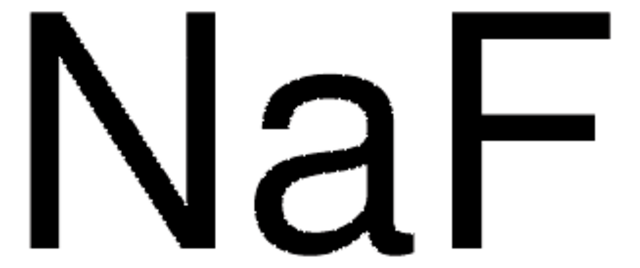71387
Chlorure de sodium
reference material for titrimetry, certified by BAM, >99.5%
Synonyme(s) :
Halite, NaCl
About This Item
Produits recommandés
Qualité
reference material
certified by BAM
Niveau de qualité
Pression de vapeur
1.33 (1.00 mmHg) at 865 °C hPa
Pureté
>99.5%
Technique(s)
titration: suitable
pH
7
Pf
801 °C (lit.)
Solubilité
water: soluble (358 g/l at 20 °C (68 °F))
Format
neat
Chaîne SMILES
[Na+].[Cl-]
InChI
1S/ClH.Na/h1H;/q;+1/p-1
Clé InChI
FAPWRFPIFSIZLT-UHFFFAOYSA-M
Vous recherchez des produits similaires ? Visite Guide de comparaison des produits
Description générale
Application
Caractéristiques et avantages
- Available as a solid in a contamination-proof glass bottle to ensure its stability for the entire shelf life until opened.
- High-purity material traceable to SRMs from NIST
- High-quality offering accurate titer determinations
- Accompanied by a certificate of analysis (CoA)
Remarque sur l'analyse
Code de la classe de stockage
11 - Combustible Solids
Classe de danger pour l'eau (WGK)
WGK 1
Point d'éclair (°F)
Not applicable
Point d'éclair (°C)
Not applicable
Équipement de protection individuelle
Eyeshields, Gloves, type N95 (US)
Faites votre choix parmi les versions les plus récentes :
Déjà en possession de ce produit ?
Retrouvez la documentation relative aux produits que vous avez récemment achetés dans la Bibliothèque de documents.
Les clients ont également consulté
Notre équipe de scientifiques dispose d'une expérience dans tous les secteurs de la recherche, notamment en sciences de la vie, science des matériaux, synthèse chimique, chromatographie, analyse et dans de nombreux autres domaines..
Contacter notre Service technique





